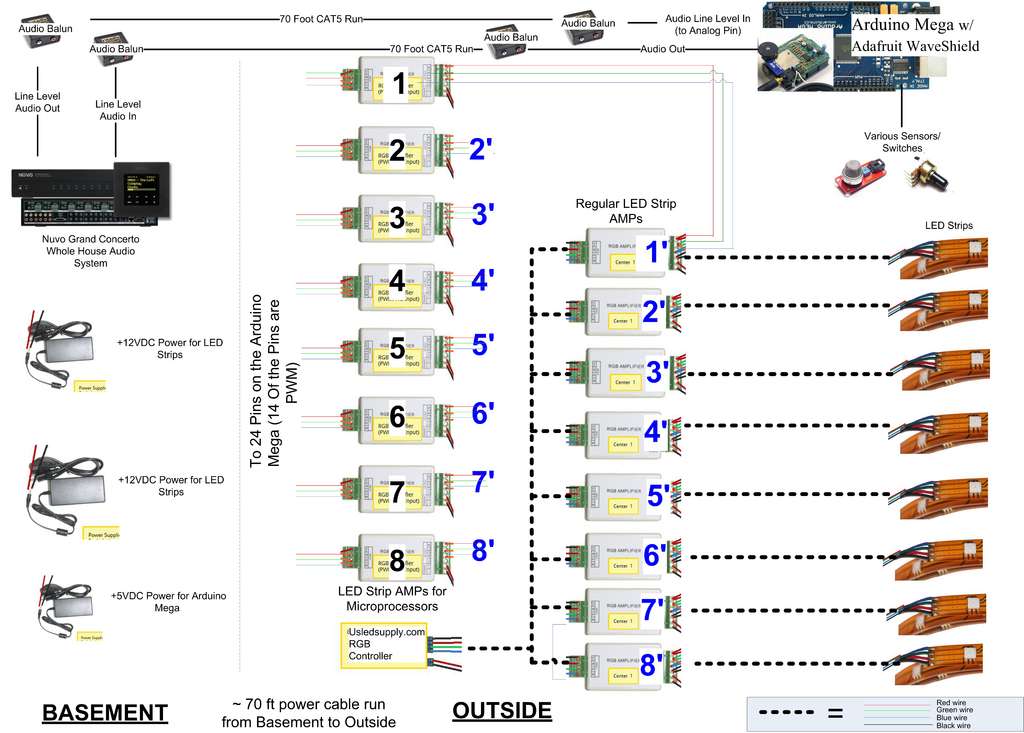The LED strips are mounted on an outdoor trellace which functions as a lightning simulator, outdoor breathalyzer, graphic equalizer synced to music, and a few other effects with sound.
Materials:
8 12v RGB Waterproof Flexible LED Strips 10ft long (usledsupply.com) – $800
8 RGB 4A/Ch Amps (usledsupply.com) – $200
8 RGB 4A/Ch Amps with TTL input (usledsupply.com) – $200
RGB Controller 8 Key Touch (Wall Plate) – $25
1 Arduino Mega – $60
1 Arduino Mega ProtoShield – $15
1 AdaFruit WaveShield – $22
1 Electrical panel enclosure to house the Arduino and LED Strip amps – $30
18-4 cable for wiring the LED strips – $30
2 Power Supply 12v 48W 4A
1 5VDC Power Supply
Waterproof Butt Connectors
Standard CAT5 wire
2 pairs of Audio Baluns
Molex connectors and crimping pins
Alcohol Sensor
Various switches and two 10K potentiometers
Other sensors of your choice
Speakers
Audio Amplifier or Whole House Audio System
Electro-Seal by Ducky (waterproof, flexible rubber coating) – Optional
Step 1: The Schematic & Audio Solution
usledsupply.com had an off the shelf LED controller for controlling the colors, dimming, flashing, etc. So I wanted to be able to use this controller along with the Arduino Mega for the lightning simulator/breathalyzer/graphic equalizer functions. The way this works is you simply turn on the controller you want and turn the other one off.
A higher resolution pic of the schematic
Step 2: Digging the Trenches & Running the Power & Audio
Step 3: Mounting the LED strips
Mounting the LED strips was pretty easy although time consuming. Mount them using a caulking gun with a tube of 100% Silicone from your local home improvement store.
Lay down a bead of the Silicone and then attach the strips. You’ll need to secure them with staples or in my case, painter’s tape until the Silicone has dried and hardened.
It’s also a good idea to power at least one of the strips so you know you’ve got your wiring right and the strips are not defective before permanently attaching them.
For more detail: The Lightning Simulator/Breathalyzer/Graphic Equalizer – Using Arduino Powered


